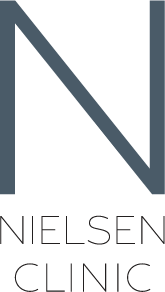
Mastitis
Homeopathy & Natural Holistic Treatment for Mastitis
Mastitis & Natural Treatment
Are you a nursing mother struggling with the pain and discomfort of mastitis? Are you tired of feeling like a one-size-fits-all treatment isn't working for you? If so, it may be time to consider personalized and natural treatment options for your mastitis.
Mastitis is a common condition that affects nursing mothers that can cause breast pain, swelling and inflammation. While traditional treatments often involve the use of antibiotics, there are also a number of natural treatments that may be effective in healing your mastitis and reducing symptoms.
If you have a history of mastitis, you unfortunately have a higher likelihood of developing it again. According to a research in the ‘Journal of Human Lactation’, women who have experienced mastitis in the past are more likely to experience it at least once more in the future than women who have never experienced it.
The good news is that the symptoms of mastitis can often be treated and healing is possible. Homeopathy and nutraceuticals could help break the cycle of mastitis and help you and your baby breastfeed comfortably.
Homeopathy & Nutraceutical (supplements) for Mastitis
What is mastitis?
Nursing mothers frequently have mastitis, a disorder that causes the breast tissue to become inflamed. It usually results from an illness, and infections are generally caused by bacteria found in breast milk or milk ducts. Physical obstructions in the milk ducts, such as those that can occur when a woman has difficulty breastfeeding or a baby latches poorly, can also cause mastitis.
Symptoms of mastitis may include:
Breast pain: The affected breast may feel sore, swollen, or tender to the touch.
Swelling: The affected breast may appear swollen or engorged.
Redness: The affected breast may appear red or inflamed.
Fever: Some women may develop a fever or flu-like symptoms.
Nausea: Some women may experience nausea or vomiting.
Fatigue: Mastitis can cause a feeling of tiredness or weakness.
If you are experiencing any of these symptoms, it's important to get the care your deserve as soon as possible to provider a proper diagnosis and treatment. Early treatment can help to prevent the condition from worsening and can help to ensure a speedy recovery.

What causes mastitis?
Mastitis occurs when their is an infiltration of bacteria into the breast tissue, leading to inflammation and the release of immune cells to fight the infection. This can cause swelling, redness, and tenderness in the affected breast, as well as fever and flu-like symptoms in the mother. If left untreated, mastitis can progress to an abscess, which is a collection of pus in the breast tissue.
There are several factors that can increase the risk of developing mastitis, including:
Poor latch: If the baby is not able to latch onto the breast properly, it can lead to blockages in the milk ducts and increase the risk of mastitis.
Infrequent breastfeeding: If a mother does not breastfeed frequently enough, the milk ducts can become blocked, leading to an increased risk of mastitis.
Cracked or damaged nipples: Nipples that are cracked or damaged can be more prone to infection and increase the risk of mastitis.
Weakened immune system: A mother with a weakened immune system may be more prone to infection and may be at increased risk of developing mastitis.
Women with a past history of mastitis have an increased risk of developing mastitis.
History of mastitis increases the future odds of mastitis
If you have a past history of mastitis, you have an increased risk of developing it again. You may be more likely to have underlying factors that increase your risk of developing the condition again such as a weakened immune system or difficulty breastfeeding. Additionally, the bacteria that cause mastitis can often remain in the breast tissue after an infection has been resolved, increasing the risk of re-infection in the future.
Natural Treatment Options for Mastitis A Modern Holistic Approach Using Homeopathy & Nutraceuticals
There are 3 steps we take to help support you during through mastitis:
Step 1 - Assess lifestyle, emotional & physical
Studies have suggested that stress related to a person's way of life can result in mastitis. Women who experienced a lot of stress after giving birth had a higher risk of developing mastitis than those who did not, according to a research in the Journal of Human Lactation.
There are numerous ways that stress could increase your risk of developing mastitis. Stress may decrease the immune system, making the body more prone to sickness. Additionally, stress can disrupt nursing practises and lead to lactation issues, increasing the risk of milk duct blockages and mastitis.
Step 2 - Address Clinical Symptoms
If your mastitis symptoms are addressed early, it's possible to speed up the recovery process and get you back to feeling healthy and well. Treating the clinical symptoms of mastitis such as breast pain, swelling, inflammation and fever can help to alleviate your pain and discomfort.
If these symptoms are left untreated for too long, mastitis can progress to an abscess, which is a collection of pus in the breast tissue. Abscesses can be painful and may require surgical drainage.
Step 3 - Optimizing Immune System Naturally
You can speed up the healing process and optimize your immune system by treating the mastitis symptoms as soon as they appear. If the signs of mastitis are handled at an early stage, you may have less pain and suffering. This will also help to avoid your mastitis from manifesting into breast edema.
At Nielsen Clinic, my treatment approach is all about understanding your specific health concerns. I can design a customized treatment plan to help you with your mastitis. This approach is based on over 17 years of clinical experience and published medical research. I have helped many women who suffer from mastitis find relief and achieve their health goals over the years.
Do you have mastitis and are tired of experiencing agony and discomfort? Have you had enough of conventional treatments and are seeking a safer option? If so, it could be beneficial to look into the advantages of holistic treatment for mastitis. Using a personalized approach, I can create a treatment plan that is unique to you by taking into account your specific needs and circumstances. This method can be especially helpful for diseases like mastitis, which can have a variety of underlying factors depending on the individual.
Book an appointment.
Are you ready to reclaim your health? It all begins with taking the first step of filling out the form to request an appointment!
It’s important to me to provide guidance and support through a science-based, holistic and integrative approach using homeopathic medicine and nutraceuticals. I will help you identify the root causes of your health issues and develop a plan to address them.
While monitoring your progress and adjust your treatment plan as needed to ensure you achieve your health goals. I will provide information along the way to help you make informed decisions about your own care, while offering support and encouragement to help you stay on track with your health goals.
To your success,
Dr. Vijay Nielsen, DMS HD RAHom-A
Homeopathic Doctor | Registered Homeopath – Calgary, Alberta Canada Integrative Medicine
Sources
Afshariani, R., Farhadi, P., Ghaffarpasand, F., & Roozbeh, J. (2014). Effectiveness of topical curcumin for treatment of mastitis in breastfeeding women: a randomized, double-blind, placebo-controlled clinical trial. Oman Medical Journal, 29(5), 330–334. https://doi.org/10.5001/omj.2014.89
Amir, L. H., Trupin, S., & Kvist, L. J. (2014). Diagnosis and treatment of mastitis in breastfeeding women. Journal of Human Lactation: Official Journal of International Lactation Consultant Association, 30(1), 10–13. https://doi.org/10.1177/0890334413516065
Barbosa-Cesnik, C., Schwartz, K., & Foxman, B. (2003). Lactation mastitis. JAMA: The Journal of the American Medical Association, 289(13), 1609–1612. https://doi.org/10.1001/jama.289.13.1609
Bond, D. M., Morris, J. M., & Nassar, N. (2017). Study protocol: evaluation of the probiotic Lactobacillus Fermentum CECT5716 for the prevention of mastitis in breastfeeding women: a randomised controlled trial. BMC Pregnancy and Childbirth, 17(1). https://doi.org/10.1186/s12884-017-1330-8
Castro, M. (1999). Homeopathy. A theoretical framework and clinical application. Journal of Nurse-Midwifery, 44(3), 280–290. https://doi.org/10.1016/s0091-2182(99)00040-3
Jahanfar, S., Ng, C. J., & Teng, C. L. (2016). Antibiotics for mastitis in breastfeeding women. Sao Paulo Medical Journal, 134(3), 273. https://doi.org/10.1590/1516-3180.20161343T1
Kinlay, J. R., O’Connell, D. L., & Kinlay, S. (1998). Incidence of mastitis in breastfeeding women during the six months after delivery: a prospective cohort study. The Medical Journal of Australia, 169(6), 310–312. https://doi.org/10.5694/j.1326-5377.1998.tb140282.x
Kinlay, J. R., O’Connell, D. L., & Kinlay, S. (2001). Risk factors for mastitis in breastfeeding women: results of a prospective cohort study. Australian and New Zealand Journal of Public Health, 25(2), 115–120. https://doi.org/10.1111/j.1753-6405.2001.tb01831.x
Knoppert DC, Jonsson A, van den Berg J, et al. Factors influencing the incidence of mastitis in lactating women. International Journal of Nursing Studies. 2008;45(8):1235-1246.
Knoppert DC, Jonsson A, van den Berg J, et al. Incidence and risk factors of mastitis in lactating women. Journal of Human Lactation. 2007;23(1):24-30.
Knoppert DC, Jonsson A, van den Berg J, et al. Risk factors for mastitis in lactating women. Journal of Human Lactation. 2006;22(3):316-321.
Pevzner, M., & Dahan, A. (2020). Mastitis while breastfeeding: Prevention, the importance of proper treatment, and potential complications. Journal of Clinical Medicine, 9(8), 2328. https://doi.org/10.3390/jcm9082328
Reichenberg-Ullman, J., & Ullman, R. (2002, June). Healing with Homeopathy: the Homeopathic Treatment of mastitis. Townsend Letter for Doctors & Patients, 134+. https://go.gale.com/ps/i.do?id=GALE%7CA86387611&sid=googleScholar&v=2.1&it=r&linkaccess=abs&issn=15254283&p=AONE&sw=w&userGroupName=anon%7Ee7924b0f
Spencer, J. P. (2008). Management of mastitis in breastfeeding women. American Family Physician, 78(6), 727–731. https://www.aafp.org/pubs/afp/issues/2008/0915/p727.html
Tomas, L. (2006). Acute & chronic lactation problems. The Journal of Complementary Medicine: CM, 5(4), 15–25. https://doi.org/10.3316/informit.228178773241082
Ullman, R., & Reichenberg-Ullman, J. (2006, November). Homeopathy for acute women’s problems: bladder infections, morning sickness, and other problems. 59+. https://go.gale.com/ps/i.do?id=GALE%7CA154457926&sid=googleScholar&v=2.1&it=r&linkaccess=abs&issn=&p=AONE&sw=w&userGroupName=anon%7E47274e70

